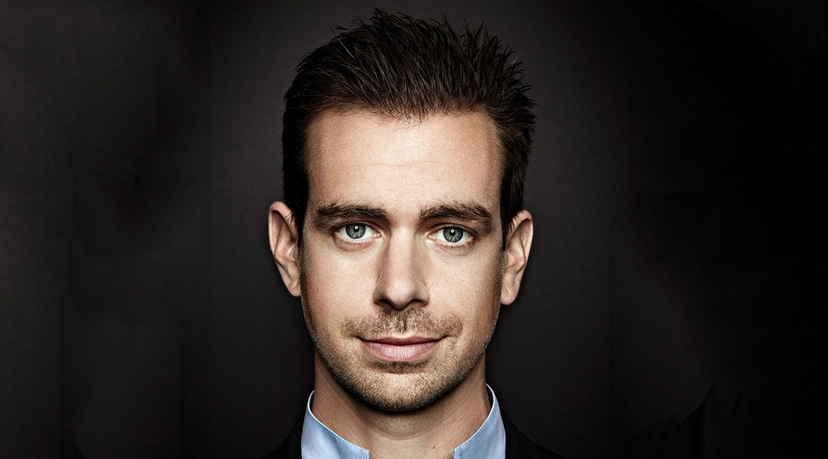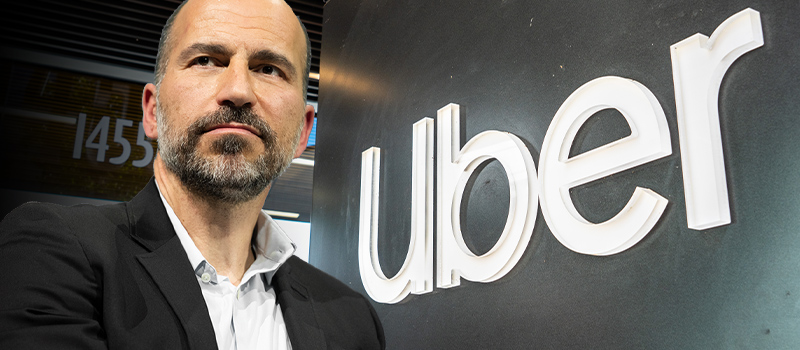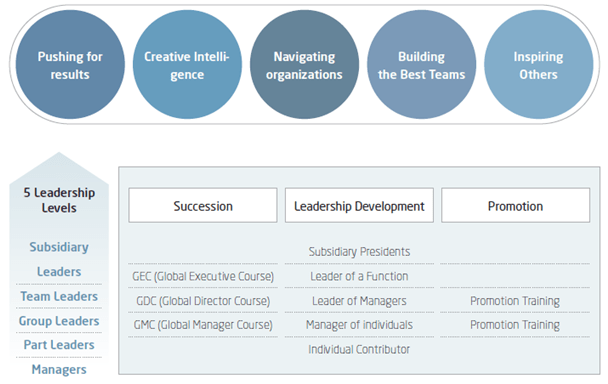Leadership

Efficiency of Square leadership is one of the competitive advantages of the business. Jack Dorsey, Square co-founder, President, and Chief Executive Officer, also serves as Chief Executive Officer of Twitter, Inc. The payments company Board of Directors comprises strong business leaders such as former CFO of PayPal Roelof Botha, CEO of Shake Shack Randy Garutti and former CFO of Goldman Sachs David Viniar. Square leadership style integrates the following two principles: 1. Purpose-driven leadership. Leadership style practiced by Jack Dorsey can be classified as a purpose-driven leadership. This type of leadership can be defined as “prioritizing purpose and people over profit and greatness over growth.”[1] For Square leadership the prioritized purpose is making easier for everyone to participate in the economy. The payments company attempts to achieve this mission through developing an ecosystem of financial products and services that are greatly simplified versions of banking services. Moreover, the purpose serves as a compass for long term decision making for Square leadership team. 2. Focus on team effort and appreciation of teamwork. At Square great emphasis is placed at teamwork and decision-making at strategic level reflects inputs from teams. It has been noted that “whether he is discussing Twitter or Square, Dorsey gives most of the credit to his team.”[2] Such an approach encourages team members at all levels to feel the ownership of the company with positive implications on their work performance. Currently, Square leadership is faced with a challenge of sticking to its leadership principles and maintaining organizational culture amid an extensive growth of the business in an international scale. Taking into account successful leadership experience of Dorsey at Twitter, which is a truly global business, it can be expected that senior management at Square can deal with this challenge in an appropriate manner. Square Inc. Report contains the above…

Uber leadership style was authoritative with co-founder and first CEO Travis Kalanick attempting to micromanage the company. The global transportation technology company had to face a leadership crisis due to incompetency of Travis Kalanick. Mr. Kalanick’s leadership style was criticized as ‘one-man-show’[1]. Moreover, it has been noted that “the sexual harassment claims, the bullying, the intellectual property lawsuit – are attributable to former leader Travis Kalanick’s brash take-no-prisoners, admit-no-errors leadership style.”[2] Scandals at the global taxi technology company escalated to an extent where Kalanick was pressured by investors to step down as Uber CEO in June 2017. The search for new CEO by the Board of Directors took two months and experienced leaders such as former CEO of HP Meg Whitman and former CEO of General Electric Jeff Immelts were shortlisted as potential heads of new Uber leadership. Expedia CEO Dara Khosrowshahi was chosen as a person to lead Uber effective from August 30, 2017. Dara Khosrowshahi was CEO of Expedia for 12 years and has proved himself as an effective business leader. Expedia’s stock has climbed more than 500% since the 2005 spinoff under the leadership of Khosrowshahi.[3] New Uber leadership is faced with a set of complex challenges that include improving organizational culture, building gender-balanced senior management team and improving relationships with drivers.[4] Changes made by Mr. Khosrowshahi so far include securing USD 7,7 billion investment from Softbank[5], emphasizing diversity and inclusion, acknowledging and apologizing for past misdeeds by the company.[6] At the same time, certain aspects of Khosrowshahi’s leadership of Uber have been subjected to criticism. First of all, Uber initial public offering (IPO) which took place on May 2019 has been rather unsuccessful. Shortly after the IPO, shares of the ride-hailing giant dropped by 11%, which was the biggest IPO first-day dollar loss in US history.[7] Moreover, certain analysts note…

Tesla leadership is frequently a topic of heated debates. Tesla CEO and co-founder Elon Musk is a controversial figure. At the same time he is admired worldwide for his entrepreneurial and leadership skills. Elon Musk is a successful serial entrepreneur with a reputation as a creative genius who founded PayPal, Space X and the Boring Company. Each of these companies has become highly successful in its respective field in the global scale. Musk also has been a driving force behind the rapid development of Tesla, assuming the roles of CEO and Product Architect with the company. He was considered as an effective visionary leader credited with the successful launch of Tesla Roadster in 2018, the first electric car to use lithium-ion battery cells. Later, Musk oversaw the launch Model S, Model X and Model 3 electric vehicles and acquisition of Solar City Corp. for USD 2,6 billion in stock. The company’s board of directors comprises 10 people, including experienced and accomplished business leaders such as Oracle founder Larry Ellison and former 21st Century Fox CEO James Murdoch. It can be argued that one of the major issues with Tesla leadership is micro-management by CEO Musk and a wide range of roles within the company Musk attempts to perform at the same time. In an interview in August 2018, Elon Musk complained about exhaustion taking a toll on his physical health, working up to 120 hours a week and about times he has to spend three or four days at the factory without going outside.[1] Tesla Inc. Report contains the above analysis of Tesla leadership. The report illustrates the application of the major analytical strategic frameworks in business studies such as SWOT, PESTEL, Porter’s Five Forces, Value Chain analysis, Ansoff Matrix and McKinsey 7S Model on Tesla. Moreover, the report contains analyses of…

Airbnb leadership practices are contradictory to leadership principles taught in famous business schools worldwide. Nevertheless, the global success of the peer-to-peer lodging company is an undisputed indication of high level of efficiency of Airbnb leadership by CEO Brian Chesky. Airbnb leadership style is integrates the following elements: 1. Going to the source. Airbnb founders Brian Chesky, Joe Gebbia and Nathan Blecharczyk had little or no traditional management experience when they founded the global hospitality service brokerage company. Particularly, Brian Chesky had no business or entrepreneurial experience whatsoever. He dealt with the challenge using the method he calls ‘going to the source’ that is getting advice from top experts in the field. Sources for Airbnb CEO included the likes of Mark Zuckerberg, Reid Hoffman, Marc Andreessen, Jeff Weiner and Jony Ive. Going to the source remains a popular practice at Airbnb to these days and is likely to remain so for the foreseeable future. 2. Managing by visibility. Hands-on approach can be specified as one of the main aspects of Brian Chesky management style. For example, CEO is known to send emails to all employees each Sunday with “whatever is on his mind, which leads to staff replying to him and opening dialogues about various elements of the business”[1] Immersing himself into important details of various business processes allows Chesky to address root causes of the problem and to find innovative solutions to them. 3. Not leading in consensus during the crisis. In 2011 a female host’s apartment was destroyed, the renter took her valuables, and stole her identity while she was travelling for business.[2] While the Chesky gave a response to the incident, the host rebutted in a blog post his claims that the company had done everything it could to help her[3]. Opinions differed within Airbnb senior…

Co-founder of the company, Bill Gates was at the helm of Microsoft leadership since its inception in 1972 until 2000, when Steve Ballmer succeeded him as CEO. While Steve Job’s leadership was rightly regarded as successful, Steve Ballmer was pointed to as the worst CEO of a large publicly traded American company in 2012 by Forbes. This viewpoint is shared by many business analysts and practitioners. It has been noted that Microsoft peaked at USD 60/share in 2000, just as Mr. Ballmer took the reins. By 2002 it had fallen into the USD 20s, and has only rarely made it back to USD30s value, until Ballmer’s replacement by Satya Nadella as CEO in 2014.[1] Currently, Microsoft leadership team comprises 21 members led by CEO Satya Nadella. Specifically, there are 12 executive vice presidents responsible for various critical directions and aspects of the business, along with chief technology officer, chief legal officer and CEO of LinkedIn. Microsoft Board of Directors comprises 14 members, who are experienced senior leaders across a range of industries. Microsoft leadership practices are based on the following principles: 1. Focus on organizational culture. Leadership style exercised by Satya Nadella places a great emphasis on developing and maintaining the right type of organizational culture. Specifically, the leader of the tech giant cultivates the integration ‘learn-it-all’, rather than ‘know-it-all’ mentality into Microsoft organizational culture. 2. Efficiency and practicality. Microsoft leadership at the most senior level has been praised for being practical and CEO Satya Nadella told employees “to stop wasting their times at pointless meetings”[2]. 3. Regular coordination of efforts across the departments and groups. CEO Satya Nadella has 8-hour meeting with his leadership team every month and he runs 4-hour meetings other three weeks.[3] These meetings involve performance review of top executives on the basis of dashboards and…

Effectiveness of Xiaomi leadership can be considered as one of the main competitive advantages for the business. Xiaomi CEO Lei Jun is a respected businessman in China who previously led Kingsoft and founded Joyo.com that was sold to Amazon in 2014. It is said that Lei has never yelled at his staff. When he encounters a problem, he just smiles and gets down to business, and tries to find a solution. In social gatherings, Lei is always a good listener.[1] Named businessmen of the Year by Forbes in 2014 and along with Alibaba Founder Jack Ma, Lei Jun is rightly considered as the face of China Inc.[2] Xiaomi CEO is recognized as an effective charismatic leader worldwide. Along with Lei Jun, seven co-founders of the company have senior leadership roles with the titles of president and vice-presidents. Having co-founders in the senior management team is an important factor due to increased sense of ownership with positive implications on the performance of executives. Xiaomi has been dubbed as “Apple of China” for its emulation of design of Apple’s products, as well as, Lei Jun style of product announcements and his general image that resembles late Apple founder and CEO Steve Jobs. However, Lei Jun leadership style is fundamentally different from Steve Jobs leadership. Specifically, while Steve Jobs was known for his centralized and micro-managing leadership style, Xiaomi CEO has a reputation for being a good listener and takes into account views of other members of his senior management team. Xiaomi leadership challenges at present include maintaining cost leadership position amid intensifying competition from other budget internet technology brands such as Oppo and Vivo. Xiaomi Inc. Report contains a full analysis of Xiaomi leadership. The report illustrates the application of the major analytical strategic frameworks in business studies such as SWOT, PESTEL,…

Samsung leadership at the most senior level has been found to be involved in a number of scandals and contradictions during the past years. There is a consensus among business theorists and practitioners that the main reasons of these scandals relate to owner-management model of the global electronics company. “Since taking over in 1987, Samsung Electronics chairman Lee Kun-hee, part of the second generation of managers from the ruling Lee family, made great contributions to the group’s astonishing management performance and the development of Samsung into South Korea’s leading global IT business”.[1] At the same time, Lee Kun-hee was convicted twice in 1995 and 2008 for slush fund cases, but escaped punishment over the X-files scandal. There were other incidents involving Samsung senior leadership belonging to the ruling family as well. These have escalated into the emergence of massive leadership crisis in 2017. Specifically, Jay Y. Lee, the former de facto head of the Samsung conglomerate, was given 5-year jail term for his role in bribery and embezzlement, part of a series of scandals that led in March to the ouster of Park Geun-hye, South Korea’s first female president.[2] Currently, the company is led by Dr. Oh-Hyun Kwon is Chief Executive Officer and Vice Chairman, Samsung Electronics; Head of Device Solutions. Samsung Board of Directors consists of four executive directors and five independent directors. The independent directors also meet separately from the Board of Director’s executive directors in order to promote a free exchange of ideas on all aspects of the company’s management.[3] As it is illustrated in figure below, Samsung has a leadership development program that comprises all five leadership levels throughout the company. Samsung Leadership Development Program Samsung Group Report contains a full analysis of Samsung leadership. The report illustrates the application of the major analytical strategic frameworks in…

Alphabet Inc. leadership team is headed by CEO Larry Page. The executive team consists of 16 members, responsible for various aspects of the business. Formerly, Eric Schmidt was CEO of Google until the business was restructured in 2015 and Alphabet Inc. was instituted as a holding company of Google, along with other businesses. Alphabet Inc. was instituted as an analogue to Warren Buffett’s Berkshire Hathaway.[1] Alphabet Board of Directors comprises 13 members, led by Executive Chairman of the Board Eric Schmidt. The Board includes successful and experienced business leaders such as Alan Mulally and Paul Otellini, as well as, distinguished economists such as Roger W. Ferguson Jr. Ph.D. and Shirley M. Tilghman Ph.D. Table below illustrates the leadership of companies within Alphabet portfolio Alphabet Inc. Company CEO Google Sundar Pichai Access Greg McCray Calico Art Levinson, former CEO of Genentech CapitalG David Drummond GV David Krane Nest Marwan Fawaz Verily Andy Conrad, founding CEO with background in X Waymo John Krafcik, background in auto industry X Astro Teller Alphabet Inc. leadership challenges in present include ensuring the profitability of business subsidiaries other than Google such as Access, Calico, CapitalG, GV, Nest, Verily, Waymo, and X. Although Larry Page has proven leadership skills, being one of the driving forces behind the emergence of Google to its current state, it is not guaranteed that he is able to replicate that same success in relation to non-Google businesses within Alphabet portfolio. Alphabet Inc. (Google) Report contains a full analysis of Alphabet Inc. leadership. The report illustrates the application of the major analytical strategic frameworks in business studies such as SWOT, PESTEL, Porter’s Five Forces, Value Chain analysis and McKinsey 7S Model on Alphabet Inc. Moreover, the report contains analyses of Alphabet Inc. business strategy, organizational structure and organizational culture. The report also comprises…

Facebook Inc. leadership is headed by its founder Mark Zuckerberg in the position of CEO and Chairman of the Board. Despite his relatively younger age among CEOs, Mr. Zuckerberg is renowned for his visionary leadership style and he is justly credited for the impressive growth rate of the company since it was founded in 2004. Mr. Zuckerberg’s initial business card read “I’m CEO, Bitch.” reflecting his aggressive leadership style at the earliest stages of business development. Moreover, named as one of the most influential personalities in the world in 2010 by Time Magazine, Mark Zuckerberg plays a dominant role in every aspect of the business and he is famous for his micro-management style. Mark Zuckerberg, as the founder, Chairman, and CEO, is able to exercise voting rights with respect to a majority of the voting power. Therefore, Zuckerberg is in the position to control a wide range of strategic matters including the election of directors and any merger, consolidation, or sale of Facebook’s assets. As of 2016, Mark Zuckerberg is only 32 years old and the youngest member of the Board of Directors. Facebook Chief operating officer, Sheryl Sandberg is also a strong and proven business leader who made impressive career in two large tech companies – Google and Facebook. She is also the author of a bestseller book ‘Lean In: Women, Work and the Will to Lead’ about female leadership in corporations. At the same time, Facebook senior leadership team has been criticised for a lack of diversity having only 3 per cent of black members in executive team.[1]… Facebook Inc. Report constitutes a comprehensive analysis of Facebook business strategy. The report illustrates the application of the major analytical strategic frameworks in business studies such as SWOT, PESTEL, Porter’s Five Forces, Value Chain analysis and McKinsey 7S Model on Facebook…

Since founding the company with his wife Doris Fisher in 1969, Donald Fisher has been at the helm of Gap Inc. leadership serving as CEO until 1995 and Chairman of the Board until 2004, and as company director and Chairman Emeritus until his death in 2009. Millard “Mickey” Drexler served as GAP CEO from 1995 until 2002 and he is credited for transforming the company into a global brand. It has been noted that “Drexler possessed the fashion instincts that built the Gap brand and image into a destination for multiple target customer groups”.[1] Drexler was forced to resign in 2002, following the decline of sales and a loss of USD 7.7 million in 2001. Paul S. Pressler from Disney was named as the new CEO due to his reputation as operations wizard to restore discipline to the floundering company.[2] Failing to appreciate the nuances of the fashion business Pressler oversaw a further decline in sales and brand image. Currently, GAP’s senior management team is led by CEO Art Peck and he is focused on executing the company’s strategy to engage customers and maximize shareholder returns. Today, Gap leadership is faced with a serious challenge of declining sales and profitability. Net sales for fiscal 2015 decreased 4 percent to USD 15.8 billion compared with USD 16.4 billion for fiscal 2014. Gross profit for fiscal 2015 was USD 5.7 billion compared with USD 6.3 billion for fiscal 2014.[3] This is the outcome of the brand using its perception of ‘coolness’ along with a set of other issues. Despite the complexity of the current situation for Gap Inc., there are optimistic views that CEO Art Peck may be successful in turning around the business partially due to his experience of two decades in management consultancy. Moreover, Mr. Peck is credited with the…
